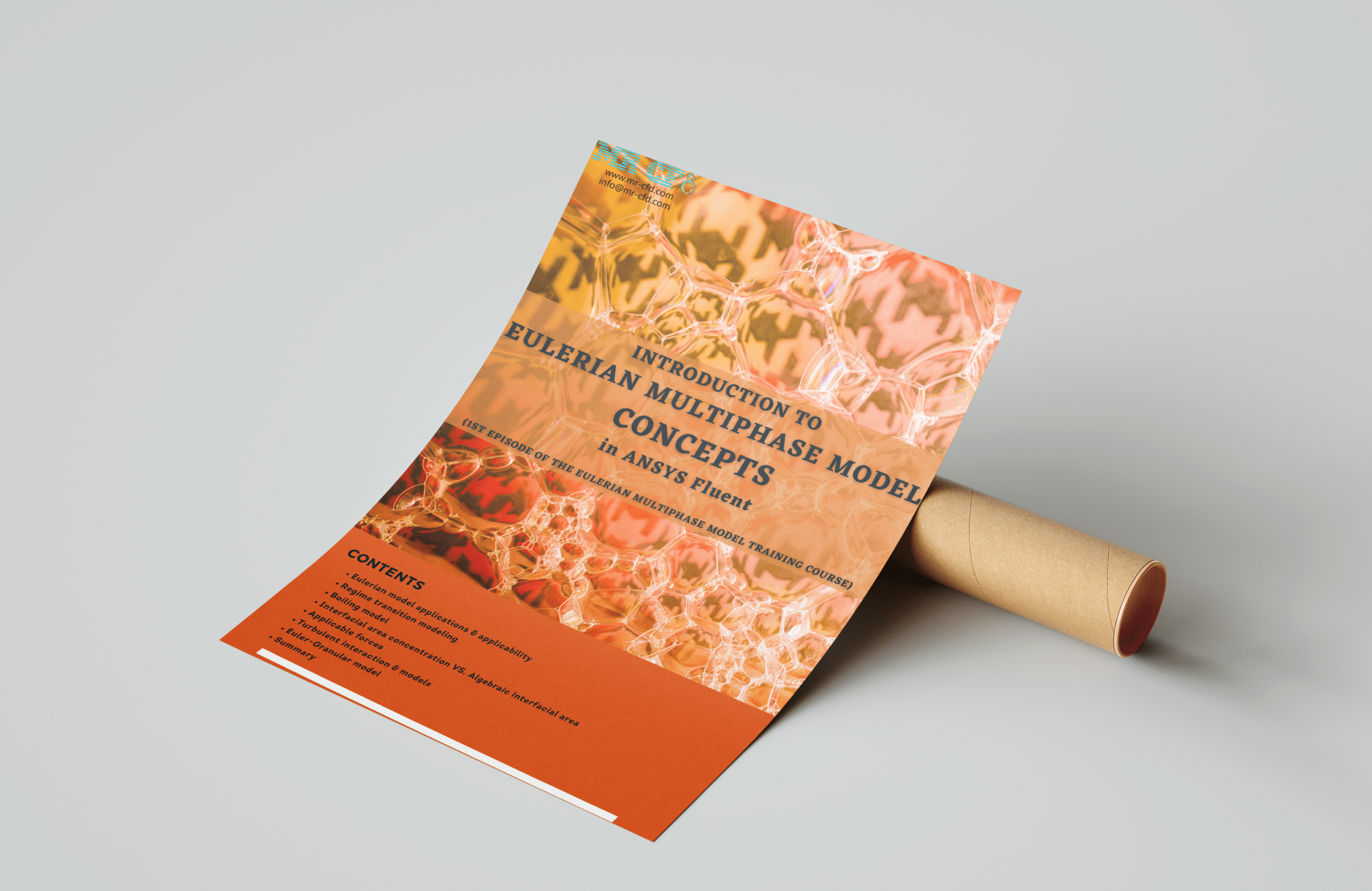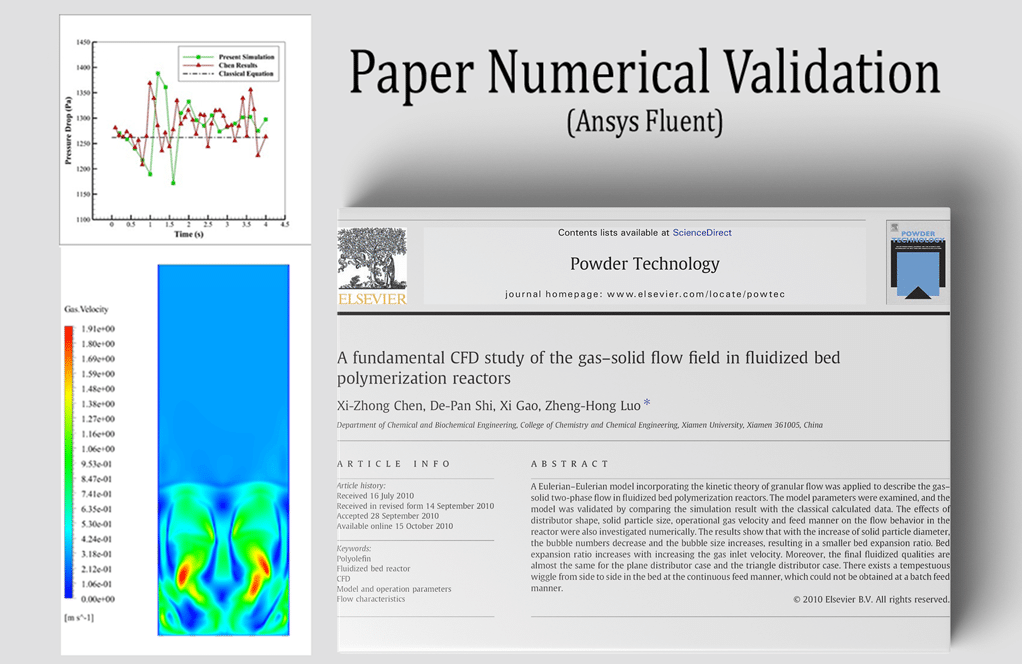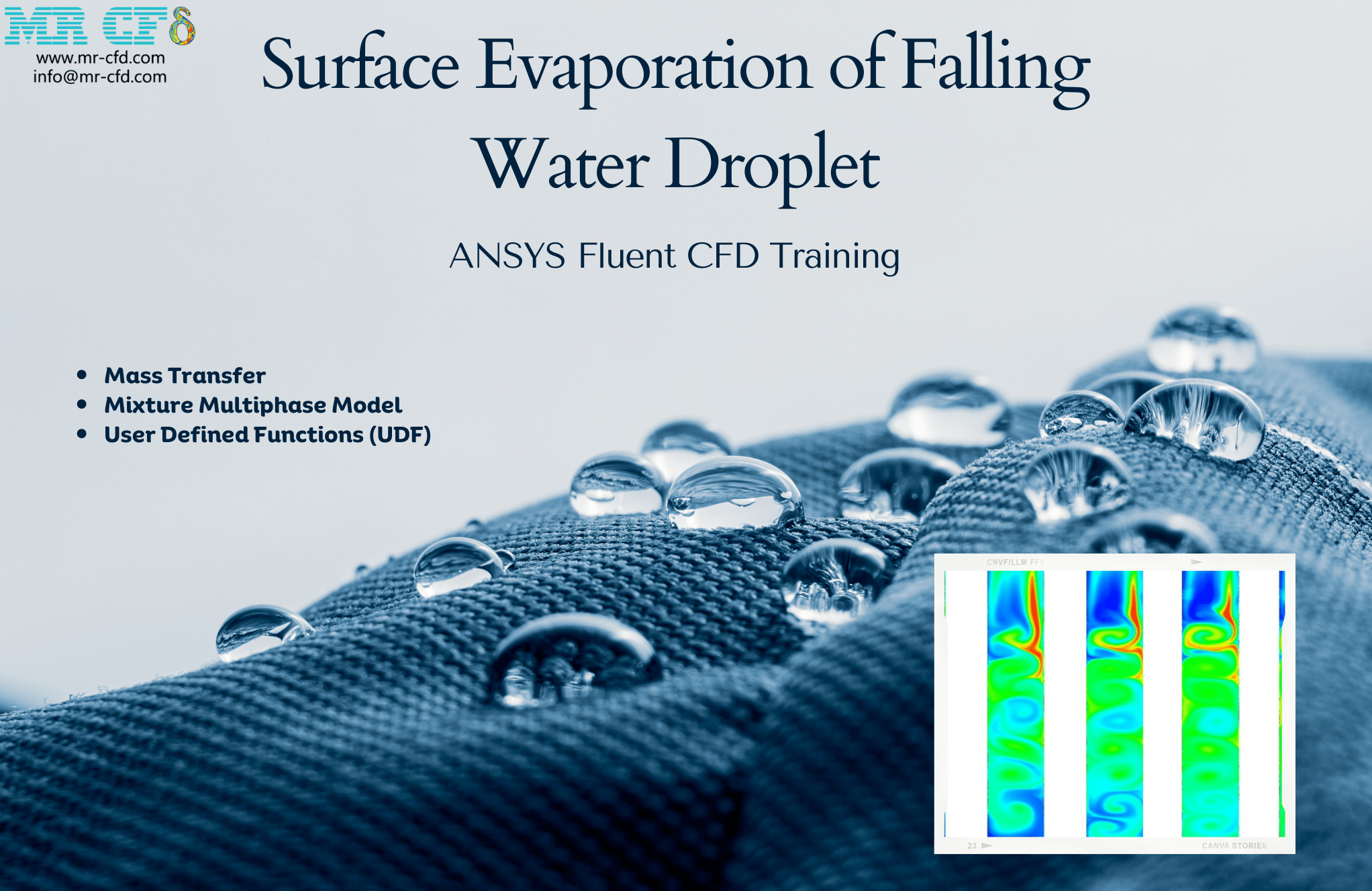Eulerian Multiphase Model Concepts in ANSYS Fluent
Free
- Eulerian model applications & applicability
- Regime transition modeling
- Boiling model
- Interfacial area concentration VS. Algebraic interfacial area
- Applicable forces
- Turbulent interaction & models
- Euler-Granular model
- Summary
To Order Your Project or benefit from a CFD consultation, contact our experts via email (info@mr-cfd.com), online support tab, or WhatsApp at +44 7443 197273.
There are some Free Products to check our service quality.
If you want the training video in another language instead of English, ask it via info@mr-cfd.com after you buy the product.
Description
Introduction to Eulerian Multiphase Model Concepts
This tutorial aims to introduce and talk about the Eulerian Multiphase Model Concepts. You will first see a general introduction to the Eulerian Multiphase model and an overview of available simulation techniques and sub-models of the Eulerian in ANSYS Fluent.
This product is the first chapter of the Eulerian Multiphase Model Training Course.
This section contains the following subsections:
- Eulerian model applications & applicability
- Regime transition modeling
- AIAD sub-model
- GENTOP sub-model
- Boiling model
- RPI boiling model
- Interfacial area concentration VS. Algebraic interfacial area
- Applicable forces
- Drag
- Lift
- Wall lubrication
- …
- Turbulent interaction & models
- Mixture
- Dispersed
- Per-phase
- Euler-Granular model
- Granular temperature
- Packed beds
- …
- Summary
This tutorial video is the 1st episode of the Eulerian Multiphase Model Training Course.





Dr. Yasmine Goodwin I –
I really enjoyed the first chapter of the Eulerian Multiphase Model Training Course. The introduction to various sub-models and the detailed explanations helped me understand the complexities of multiphase flows and their simulation in ANSYS Fluent.
MR CFD Support –
Thank you for your positive feedback on the Eulerian Multiphase Model course’s first chapter! We’re delighted to know that it enhanced your understanding of multiphase flow simulations in ANSYS Fluent. If you ever have more questions or need further assistance, please don’t hesitate to reach out!
Tristian Williamson –
Does this introductory tutorial cover the application of the boiling model in engineering scenarios?
MR CFD Support –
Yes, this introductory tutorial includes an overview of the boiling model, specifically the RPI boiling model. It also touches on other boiling sub-models and their potential applications in real-world engineering scenarios.
Mr. Terrence Kling –
I truly enjoyed the introductory chapter. It was well-structured and the examples helped me understand the basic concepts. Thumbs up for the clear explanation!
MR CFD Support –
Thank you for your positive feedback! We’re delighted to hear you found the tutorial helpful and clear. Stay tuned for more engaging and informative content!
Amani Marks –
The introductory tutorial sounds comprehensive. Could you clarify what ‘AIAD submodel’ stands for in this context?
MR CFD Support –
Of course! ‘AIAD’ stands for Algebraic Interfacial Area Density. It is a sub-model within the Eulerian Multiphase Model framework used in ANSYS Fluent to calculate the interfacial area concentration based on algebraic relations that consider the local flow conditions.
Daron Bauch –
I was glad to begin with the Eulerian Multiphase Model Concepts tutorial. The overview of simulation techniques helped to clarify different approaches. Can you tell me more about how the GENTOP sub-model differs from the AIAD sub-model?
MR CFD Support –
Certainly! The GENTOP sub-model in ANSYS Fluent is designed for dealing with generalized two-phase flow topology. GENTOP can model situations where phase distribution isn’t clearly separated by distinct interfaces and considers topological transitions between a dispersed and a separated phase. On the other hand, the AIAD (Algebraic Interfacial Area Density) sub-model focuses on calculating the interfacial area density of dispersed phases algebraically without explicitly tracking the interface, providing a simpler and usually faster but less detailed approach than regime-specific modeling.
Vince Kris –
What are the major differences between the AIAD and GENTOP sub-models mentioned?
MR CFD Support –
In the Eulerian Multiphase model, the AIAD sub-model is used for calculating interfacial area density by accounting for bubble coalescence and breakup mechanisms, while instructions wearing the awards Ya the Many NikolaIn contrast, the GENTOP sub-model focuses on generalized two-phase flow treatment, suitable for predicting flow regime transitions over a range of input conditions.